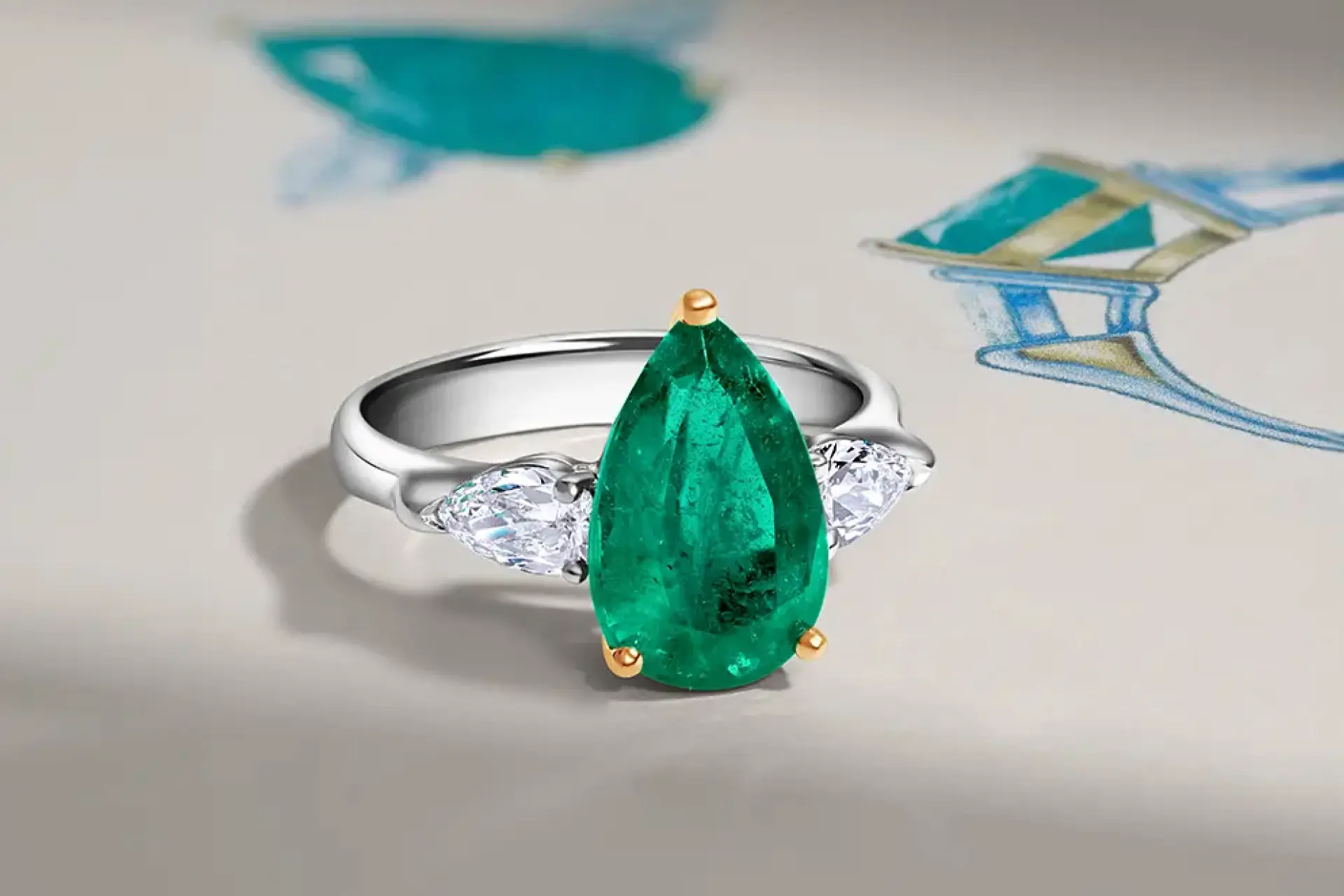Genuine gemstones are rare minerals formed in nature over millions of years under specific geological conditions of high pressure and temperature. They are distinguished by their beauty, high value, and use in ornaments and jewelry. These stones vary in color, transparency, and hardness, and each has distinct properties that make it unique.
Understanding the Importance of Genuine Gemstones
Genuine gemstones have a uniform, intense, rich, and vibrant color. Inconsistent or unusual colors may indicate synthetic stones. The following highlights the importance of genuine gemstones:
The Value of Authentic Gemstones:
The value of genuine gemstones is determined based on a complex set of factors, often known as the “4 Cs” (weight, color, clarity, cut), as well as other important factors such as rarity, origin, and the treatments the stone has undergone. For those interested in exploring a wide variety of authentic colored gems, the Color Stones Collection offers exquisite options.
Risks Associated with Fake Gemstones:
The biggest risk is paying a high price for something that isn’t as good or valuable as a real gemstone. Fake gemstones are typically made of cheaper materials and don’t retain their value over time. They’re often considered mere accessories with no investment value.
Common Misconceptions About Gemstone Authenticity:
There are many common misconceptions about gemstone authenticity, which can lead to consumer confusion. Here are some of the most prominent:
- That expensive gemstones are all real: This is not true. Fake, simulated, or treated gemstones can be sold for the same price as the original. It’s always important to research the cost of the gem you’re purchasing and consider price differences.
- A diamond’s brilliance is an indicator of its quality: The brilliance in a diamond comes from its cut, which is designed to refract and reflect light. Therefore, it’s important to look for color and clarity when assessing quality, not just the amount of brilliance.
Key Characteristics of Genuine Gemstones
Genuine gemstones have unique properties that distinguish them from fake or synthetic gemstones. These properties are the result of their natural formation over millions of years under complex conditions of pressure and heat. Here are the most prominent characteristics of genuine gemstones:
Visual Indicators: Color, Clarity, and Cut:
- Genuine gemstones tend to have a uniform, intense, rich, and vibrant color.
- It is rare to find a natural gemstone that is completely free of internal inclusions and blemishes (sometimes called “emerald gardens” in emeralds). These inclusions are part of the stone’s natural fingerprint.
- The hardness of gemstones is measured on the Mohs scale, a scale that determines a stone’s resistance to scratching.
Physical Properties: Hardness and Density:
- Genuine gemstones are typically harder than those made from less valuable materials or imitations. For example, diamond is the hardest natural substance on Earth and can scratch almost any other surface. Rubies and emeralds are second only to diamonds in hardness.
- Hardness can be tested by attempting to scratch the surface of a stone with a known hardness material, or vice versa. Genuine gemstones will typically scratch glass, while glass will not scratch genuine gemstones.
Inclusions and Natural Imperfections:
Genuine gemstones have a distinctive luster and shine that reflects light in an attractive way.
A good cut enhances this natural luster.
Methods to Identify Genuine Gemstones
Identifying real gemstones from fakes requires experience and knowledge of their properties. Here are some common and reliable methods for distinguishing between them:
Professional Appraisals and Certifications:
- Color: Genuine gemstones have a uniform, intense, rich, and vibrant color. Synthetic gemstones may have inconsistent, unusual, or overly “perfect” colors.
- Luster (Shining): Each gemstone has a distinct luster that reflects light in a specific way (vitreous, metallic, oily, silky, pearly). Simulated gemstones may have a different or unnatural luster.
At-Home Testing Techniques:
- Hold the stone between your fingers.
- Blow hot air over it (like breathing on a mirror to create fog).
- If the fog dissipates immediately, the stone is likely authentic (especially diamonds), as genuine gemstones conduct heat effectively and dissipate it quickly. If the fog takes several seconds to dissipate, it’s likely fake.
Utilizing Technology: Refractometers and Spectroscopes
- Use a magnifying glass or microscope to see fine details on the stone’s surface.
- Look for natural imperfections (such as tiny bubbles, microscopic cracks, or internal blemishes). Fake stones are often completely flawless or contain imperfections in a specific pattern (such as regular circular air bubbles).
- Avoid obvious surface scratches, as these may indicate that it is not a solid gemstone.
Differentiating Between Natural, Synthetic, and Imitation Gemstones
Distinguishing between natural, synthetic, and imitation gemstones requires some expertise and tools, but there are general signs and guidelines that can help. Here are the most prominent differences and how to distinguish between them:
Natural vs. Synthetic Gemstones:
Natural gemstones are formed deep within the Earth over millions of years by geological factors such as heat and pressure. Each natural stone is unique and bears its own “fingerprint.” Synthetic gemstones are gemstones created in laboratories under conditions that mimic the natural conditions in which natural gemstones are formed. They have the same chemical composition, physical, and optical properties as their natural counterparts.
Spotting Imitation Gemstones:
Accurately distinguishing between these three types requires experience and knowledge of gemological tools. If you intend to purchase a valuable gemstone, it is always best to consult a certified gemologist. They have the tools and knowledge necessary to perform accurate examinations (such as refractive index, specific gravity, and microscopic examination) and accurately determine the origin of the stone.
The Role of Treatments and Enhancements:
Treatments and enhancements play an important role in the world of gemstones, aiming to enhance their beauty, improve their properties, and increase their commercial value. However, it is essential to understand the nature of these treatments and their impact on the original gemstone.
Frequently Asked Questions About Gemstone Authenticity
Can Synthetic Gemstones Be Considered Real?
Yes, synthetic gemstones can be considered “real” chemically and physically, but they are not “natural.”
How Reliable Are Online Gemstone Purchases?
Buying gemstones online can be very reliable, but it requires taking some precautions to ensure you’re getting an authentic, high-quality product. There are many reliable online stores that offer authentic gemstones with certificates of authenticity, but there are also risks of fraud or purchasing poor-quality gemstones.
What Certifications Should I Look For?
Certification details vary depending on the type of gemstone and the laboratory, but in general, they should include the following information:
- Type of gemstone: Whether the stone is natural or synthetic (laboratory-grown).
- Dimensions and weight (in carats): The exact measurements and weight of the stone.
- Color: The color tone of the stone.
- Clarity (purity): The degree to which the stone is free of internal and external inclusions or flaws.






